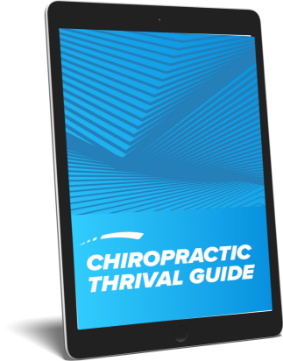A growing number of chiropractors are supporting a four year prerequisite for admission to chiropractic college. A few states have even adopted a bachelor’s degree requirement as a matter of law. (1)
The premise seems to be that more pre-professional training equals better doctors. It is time to expose this premise as unproven.
I have been unable to locate any studies comparing D.C.s with two years of pre-professional study with those having four. Fortunately, there have been studies comparing medical doctors with two, three and four years of pre-professional education. These studies show that there is no significant difference in performance.
In the 1970s, because of a perceived physician shortage, several medical schools offered six year combined liberal arts-medicine programs. Lazoni and Kayne reported the results of such a program. The authors described their findings: “Graduates of a six-year combined Liberal-Arts-Medicine Program and their medical school classmates (traditional ‘eight year’ students) are compared as to their medical school performance and their professional postgraduate activities. On standardized examinations (Medical College Admission Test and examinations of the National Board of Medical Examiners) the six-year group was somewhat better than the eight-year group.
“In other aspects, such as class ranking, honors at graduation, and medicine clerkship grades, the six- and eight-year groups were similar. The two groups were remarkably similar in their postgraduate professional career choices and in achieving board certification.
“The data for the first three classes indicate that qualified high school students can succeed academically in an accelerated collegiate-degree program, do well in medical practice, and begin the practice of medicine at a younger age.” (2)
These findings are corroborated by a JAMA article which stated, “These data, together with additional information concerning postgraduate professional activities, indicate that the combined accelerated program has been successful.” (3)
More recently, a group of Canadian investigators reached similar conclusions: “There were no significant differences between the three groups in the results of any of the subjective and objective outcome measures. Students who have completed 2 years of undergraduate study before admission to medical school were able to achieve a satisfactory level of competency and maturity by the end of medical school. The 2-year option for entrance into medical school should be reconsidered.” (4)
Doxey and Phillips, in comparing entrance requirements for health care professions, wisely observed, “The value of pre-professional requirements relating to success in practice is yet to be determined.” (5)
It is obvious that there is no evidence whatsoever that more beer, botany, and Beowulf make a better doctor! Those pushing for increased prerequisites should be shown what medicine has found — it just doesn’t matter. Those wishing to increase the amount of time required to obtain a D.C. degree would be wise to consider improved clinical training rather than more prerequisites.
References
1. Professional regulation in the United States. Federation of Chiropractic Licensing Boards brochure. 1996.
2. Lanzoni V, Kayne HL: “A report on graduates of the Boston University six-year combined liberal-arts-medicine program.” J Med Educ 1976;51(4):283.
3. Blaustein EH, Kayne HL: “The accelerated medical program and the liberal arts at Boston University. JAMA 1976;235(24):2618.
4. Crockford PM, Gupta DM, Grace MG: “Requirements for admission to medical school: how many years of university study are necessary?” Can Med Assoc J 1995;153(11):1595.
5. Doxey THE, Phillips RB: “Comparison of entrance requirements for health care professions.” JMPT 1997;20(2):86.

























































































































































